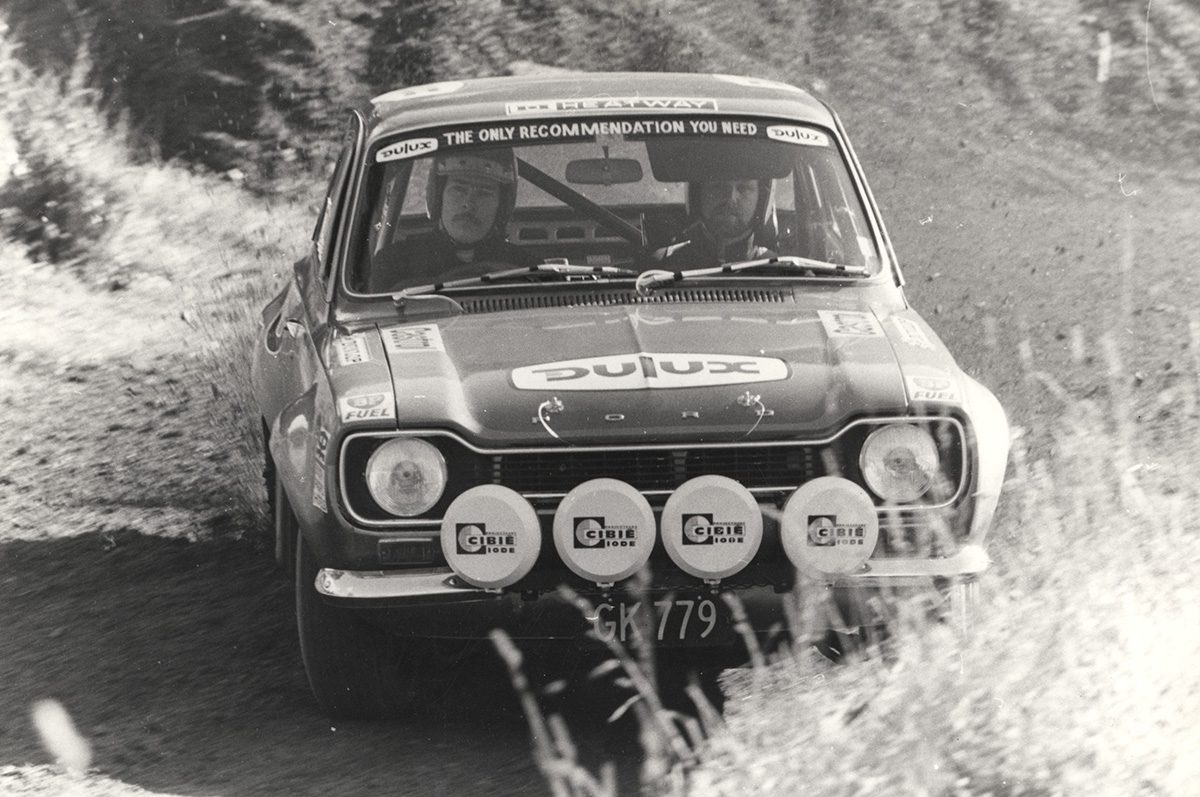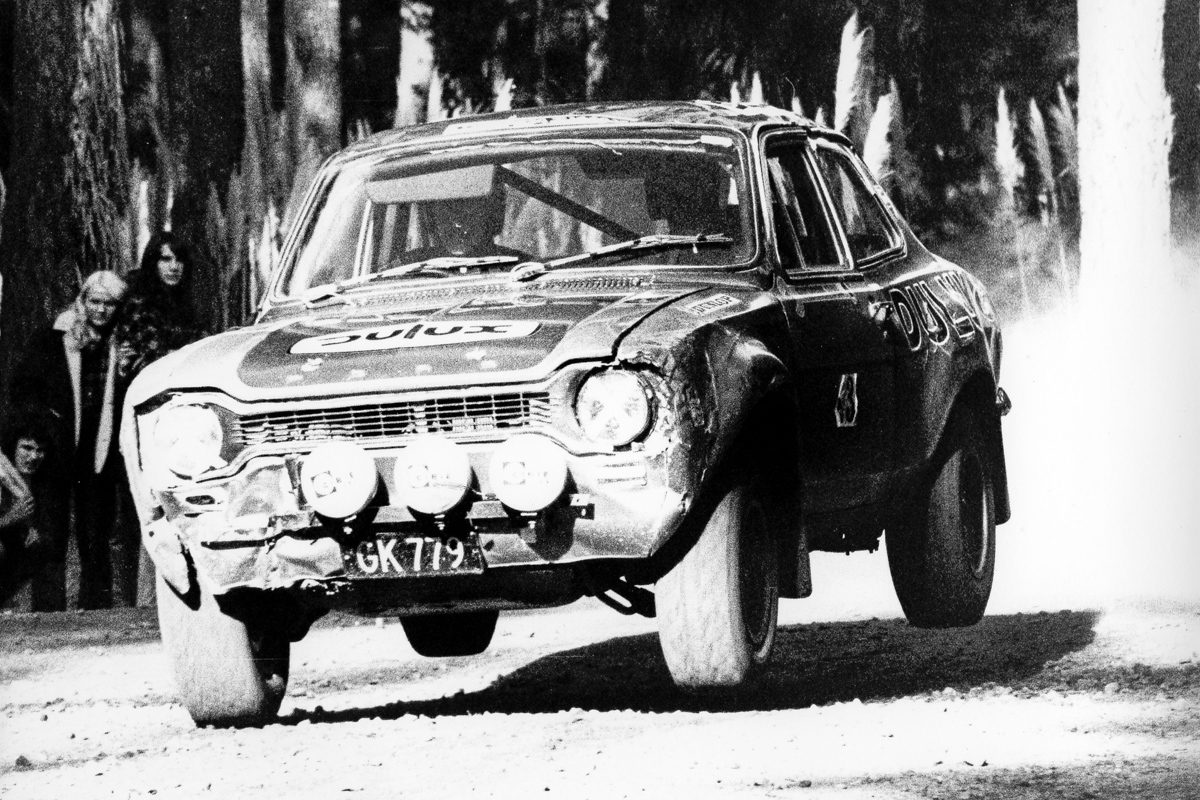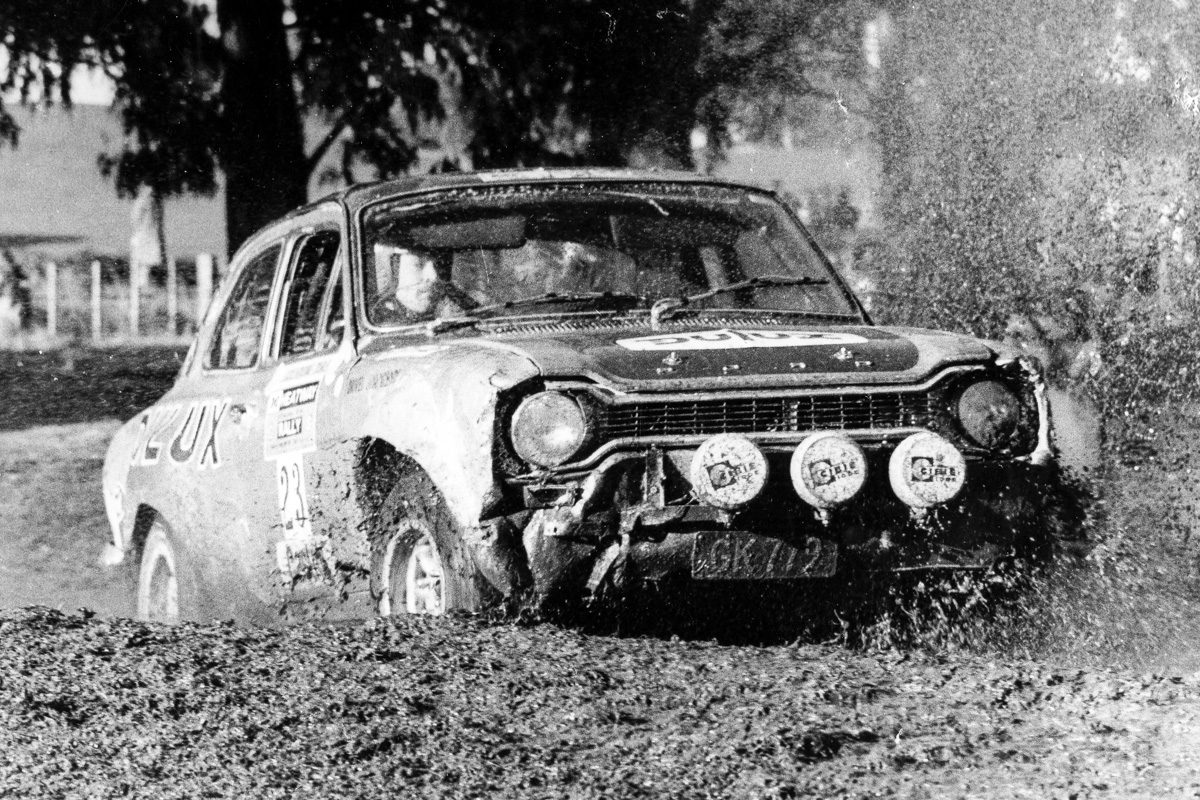Kiwi-born but Australian based since the mid-1970s, the seven-time Bathurst 1000 winner has just released a new book documenting his amazing career, ‘Gentleman Jim: The Official Racing History of Jim Richards’.
Published by V8 Sleuth’s Aaron Noonan and written by Will Dale and Noonan in association with the racing legend, the 400-page hardcover is an impressive read packed with hundreds of amazing colour and black and white photos.
It’s available to order here from the V8 Sleuth SuperStore.
Rallying fans will know that Jim’s career is far more than his exploits on bitumen, and that he proved to be a dab hand in a rally car too.
This excerpt from the recently released book is the tale of Jim’s assault on the 1973 Heatway Rally in New Zealand and the frosty reception he got from none other than Hannu Mikkola.
Jim Richards and the 1973 Heatway Rally
Ford tackled the 1973 event in a big way with three entries for Richards, Kiwi star Mike Marshall, and international gun Hannu Mikkola. The Finn, an established star in Europe, headlined the 120-strong field of drivers and cars from around Australasia and beyond, including reigning victor (Andrew) Cowan and Kenyan legend Shekhar Mehta.
The eight-day event put competitors through a demanding 5,700-kilometre test – over half of which consisted of competitive Special Stages – starting in Christchurch and trekking around both North and South Islands towards the finish in Auckland, with frigid mid-winter weather making road conditions treacherous.
Mikkola led the early stages as expected, but what wasn’t expected was for Richards to be leading the charge behind him. Mikkola and Marshall enjoyed fully developed RS1600s built at Ford’s competition base in England.
Richards’ car, put together and serviced throughout the rally by Grant Walker, shared their suspension package but not the lighter and more powerful two-litre alloy block BDA engine of the works cars, while he also made do with a four-speed gearbox compared to the works cars’ five-speeds.
Unfortunately, Richards’ challenge for outright honours ended spectacularly on the opening night in the Southern Alps.
“We got to the start point of the Dansey’s Pass stage at about two in the morning, and the marshal warned us of a bit of snow and ice on the road and to ‘be careful’ – whatever that’s supposed to mean,” Richards recalls.
“I’d never driven a stage on snow and ice before – you couldn’t see the ice – but we were going good and could see Mikkola’s taillights in front of us. We came down quite a reasonably long stretch down a hill towards a corner. I braked and turned in, but nothing happened. The car just went straight ahead, sliding on the ice. We hit the verge on the outside of the road, went over it and rolled down this embankment.”
The car finally came to rest on its passenger’s side with Richards and navigator Richard Halls unhurt. The pair clambered out and – unable to see the scale of the damage – rolled the car back onto its wheels to improve their chances of eventually being able to get back on their way.
“It had been pitch black and we weren’t able to see anything beyond what had been lit up by the headlights,” Richards says.
“We climbed up the hill on our hands and knees back up to the road and sat there until all the rally cars had come through. To keep warm, we ran up and down the side of the hill – it was bloody freezing!”
It was only when the sun started to rise, several hours later, that the pair realised just how lucky they’d been. The car had landed on a narrow, rocky ledge; had it rolled much further, the little green Escort and its pilots would have plunged thousands of feet off a cliff.
The rest of the rally field had long gone by the time a local farmer arrived with his tractor and a winch to tow the Escort out of its predicament, both its windscreens smashed, a door ripped off and virtually every panel battered and beaten. But mechanically it looked intact, and all four wheels were still attached and pointing relatively straight.
“Stupidly, I thought: ‘I wonder if it’ll start,’” Richards laughs.
“So I leaned in, turned the key and vroom, vroom, it started up! We checked the oil and water, threw the broken screens and the door on the back seat and headed back to Christchurch for repairs. It took three-quarters of a day to drive back, and it was absolutely freezing with all the wind coming in where the windscreen should’ve been.”
They missed the entire second day of the rally while the car was beaten back into shape and rejoined the event on the third day, well out of overall contention but still quick enough to challenge for stage victories despite having to start each day’s stages at the tail of the field.
“As you passed cars you’d get up towards the front of the running order; we’d pass a dozen cars in one stage,” Richards says.
“But when you started the next day you were back to last again because it was on the overall result, so we’d have to pass them all again!”
Mikkola won the event overall in a canter from Marshall, but Richards’ lowly final position was outweighed by a succession of stage wins across the remainder of the event. It was a feat that didn’t go down well with the visiting star.
“I think we won 16 special stages and Mikkola won 22,” Richards says.
“I hadn’t spoken to him for basically the whole rally because we were never in the same area at the same time. He came up to me at the social function afterwards and said: ‘You should not have been winning those stages. It wasn’t right that you would go faster than me; I was the leader.’
“I told him that he might have been the leader in his car, but I was doing the best for the sponsors on my car.”







